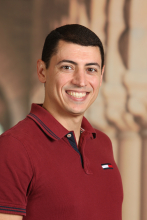
More of the Same? The Structure of Research Collaboration Networks in Homogeneous Academic Environments
Elite research universities in Brazil commonly employ former students as faculty members. Also known as academic inbreeding, this practice is usually understood to negatively influence how productive scholars are. Researchers have focused on measuring the effects of academic inbreeding on scientific production (both quantity and quality). However, little is known about how it influences research collaboration. Nowadays, knowledge production and innovation require the crossing of scientific boundaries. Despite the academic excellence of these Brazilian institutions, a faculty body high in redundant contacts could be limiting opportunities for the exchange of new information. As previous scholarship has shown, individuals who are able to fill “structural holes” in their networks, also known as “brokers,” benefit from having control over the flow of information. How is information exchanged and knowledge produced in a homogeneous academic environment? By analyzing 20 years of research collaboration (2000-2019) in the University of São Paulo, this study seeks to understand the structure of these research groups and to identify if faculty members are incentivized to or discouraged from exploring gaps of knowledge in their own networks.

